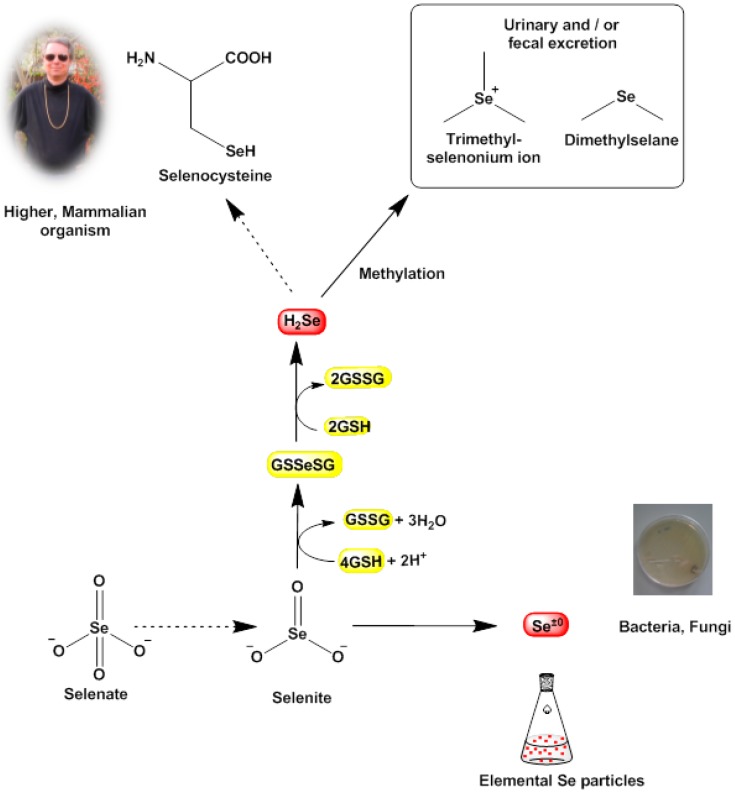Figure 5.
Known bioreductive pathways for SeO32− (and TeO32−) in certain bacterial cells. These pathways often terminate in the formation of (solid) elemental selenium and tellurium (nano)particles, which subsequently may cause damage to the cell. In our studies, it appears that selenite (SeO32−) and tellurite (TeO32−) are also reduced by S. aureus, as different reports have observed similar changes in color and the formation of deposits and have linked these physical changes to the formation of selenium and tellurium, respectively. In sharp contrast, mammalian cells tend to by-pass the “zero oxidation state” and form H2Se as a valuable raw product for the synthesis of the amino acid selenocysteine, whilst excess selenium is excreted in form of methylated products. Hence the bioreductively generated toxicity of selenium and tellurium (nano)particles is probably more or less specific for lower organisms.

